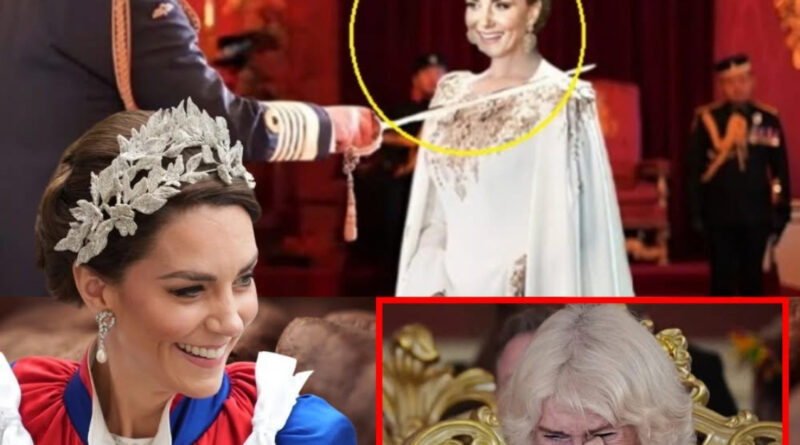“THE ROOM FELL SILENT THE MOMENT SHE STEPPED FORWARD.”
“THE ROOM FELL SILENT THE MOMENT SHE STEPPED FORWARD.”
The shift didn’t arrive with fanfare or trumpets. It came quietly — through a dawn communiqué from Buckingham Palace. Just a few carefully chosen lines, yet enough to alter the course of the modern monarchy:
“His Majesty the King, in reflection and with the Crown’s legacy in mind, has asked the Princess of Wales to begin preparing for a more prominent role — one traditionally aligned with that of the Queen Consort. Her Majesty Queen Camilla has offered her full support for this transition.”
For a heartbeat, silence hung over the palace. And then came the tremor.
The Freeze
Those inside the gilded corridors described it as “a room holding its breath.” Queen Camilla, pale but composed, quietly stepped back. In her place, Catherine, poised and steady, moved forward — her head inclined not in triumph, but in reverence to the weight now placed upon her.
It was a gesture that needed no words. Something irreversible had shifted.
“This wasn’t about duty,” one aide whispered later. “It was about destiny.”
The Twist
For years, Catherine has been the monarchy’s quiet anchor — a steady presence in crisis, radiant with the public, flawless in image. Polls consistently rank her not only as the most admired royal, but also as the figure most trusted to carry the monarchy into the future.
And yet, few expected this. To symbolically eclipse a sitting Queen Consort is almost without precedent. It is more than a ceremonial adjustment — it is a statement. A recalibration. And, perhaps, the moment Catherine Middleton truly became the monarchy’s future face.
